US Air Force S&W M13 Survival Revolver
Quickie on the US Air Force Survival Weapon
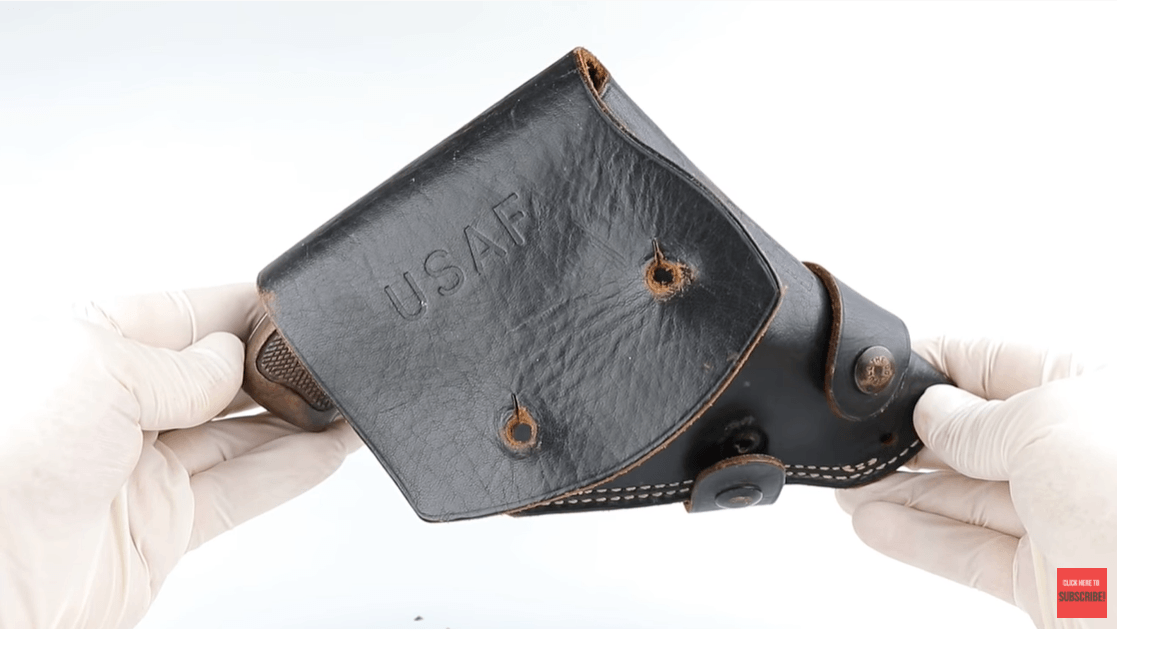
Hey guys and welcome to another Walk-in Wednesday. And today its going to be a quickie because I just have one gun that I want to show you but it's worthwhile because it's a very rare gun. This is actually, you can see it marked right here on the holster, US Air Force. Some of you will recognize it, it's a very rare gun and again that's why I just thought well I'll just do a quick video about this survival weapon.
We need a survival weapon in the cockpit!
This was designed for bomber crews, fighter crews. It had to be very lightweight. This one is made by Smith and Wesson and it was an air force contract in the early 50s. So to back up a little bit, after World War II they wanted to have a weapon, a survival weapon in the cockpit.
What if we land in enemy territory with these ejector seats?
Also, they were starting to use ejector seats. They, of course, wanted the pilot to have some type of protection when they got to the ground, sometimes in enemy territory. Now if you're surrounded by the Chinese hordes or the Russian hordes, who are maybe used in Korea, I can't imagine this is going to hold off an army. Maybe it's designed to end your life if you know you're about to be taken prisoner and that would be an unpleasant thing. I'm not sure.
How exactly are we supposed to use this?
Certainly, the manual doesn't say how it's to be used but it is considered a survival weapon. The history of this particular design starts in 1951, probably 1950 they drew up the design. And Colt was the first one to make the first 1200. There's actually a video, I only found one video about this.
Spot the differences – M13 vs The Colt variation
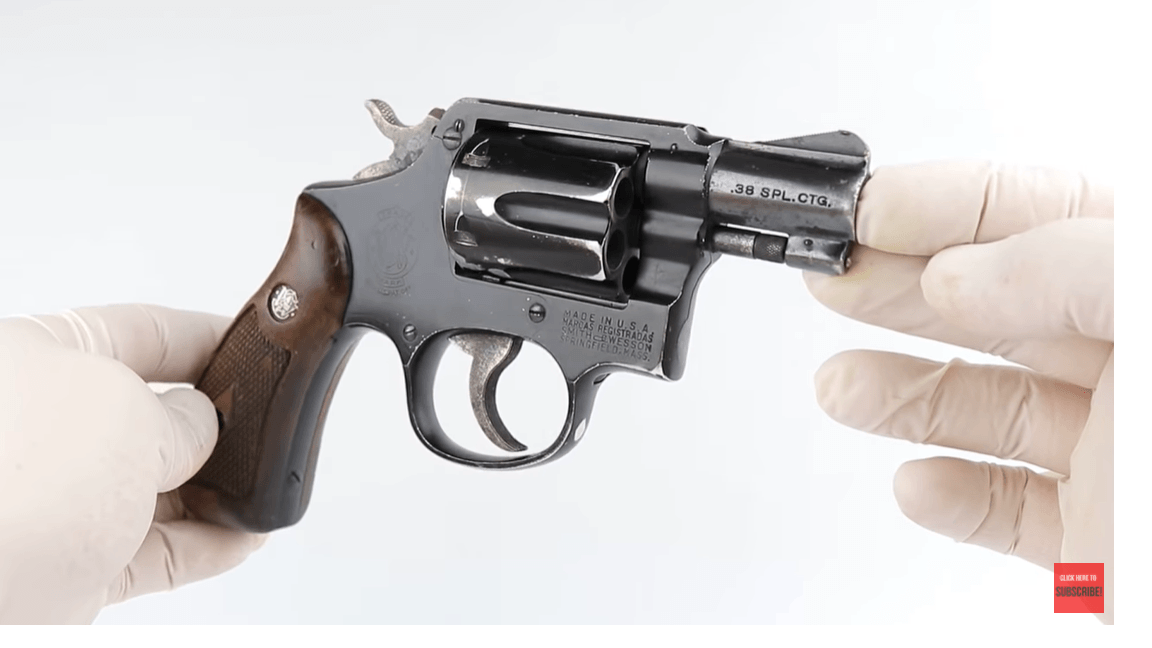
And, by the way, it's designated the M13, model 13 survival revolver. So the M13, I found one video and of course, Ian from Forgotten Weapons did one on the Colt variation. It's very similar. Mechanically it has a few differences. If you take a look at a picture of the M13 Colt, there's very few differences. Of course the Colt logo versus the Smith and Wesson logo. And one other difference that I thought was pretty cool, on the grip panel, instead of having the Colt logo you actually see the Air Force logo. So they made about 1200 of those in 1951 but then very quickly 1953 Smith and Wesson took over the contract and made about 40,000 of them. They did make them from 1953 - 1957.
US Air Force holster, easy to carry!
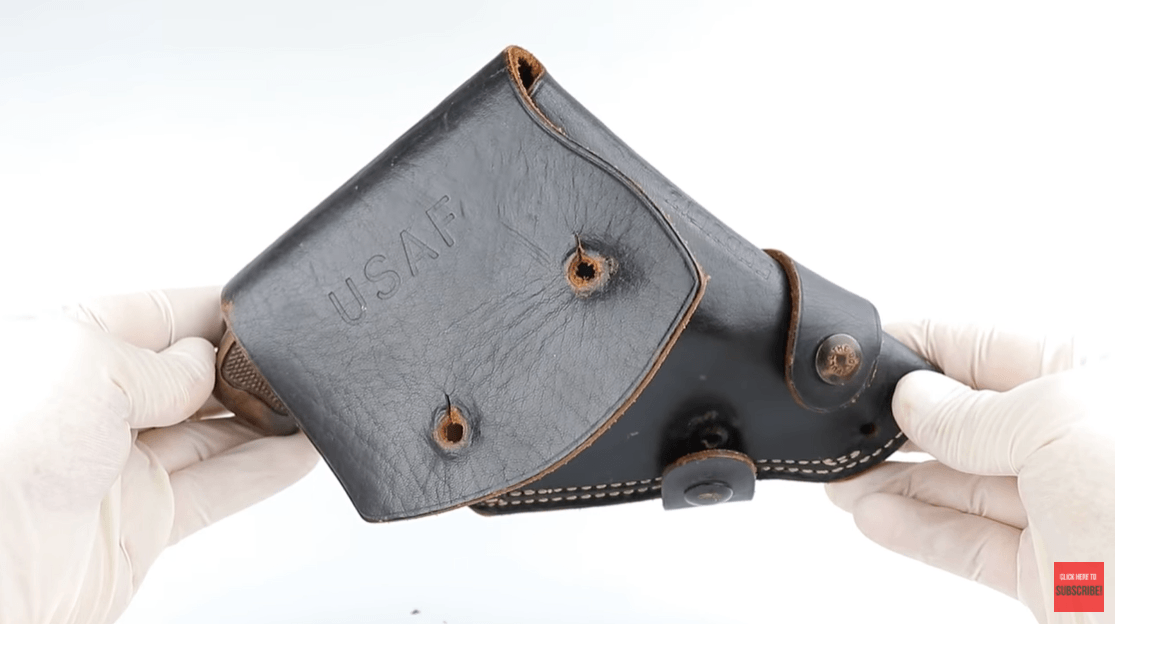
So let's take a closer look at this one. I already showed you the holster and you can see the US Air Force, a very simple holster. Most likely designed to be on a strap, probably for the pilot or a bomber crew somewhere on their chest, this would be carried. So if you're ejected from the plane you automatically take it with you. You don't have to remember to go back and get it. The gun itself, let's take a closer look at that.
Look for the Logo

This one, again, this is not the Colt model, this is the more common, not very common, 40,000 of them made most of them destroyed. You do see first and foremost the Smith and Wesson logo, both on the grip panel and on the frame. By the way, one grip panel is numbered to the gun. If you happen to get your hands on one of these you can check it out.
Is this US Air Force Property?
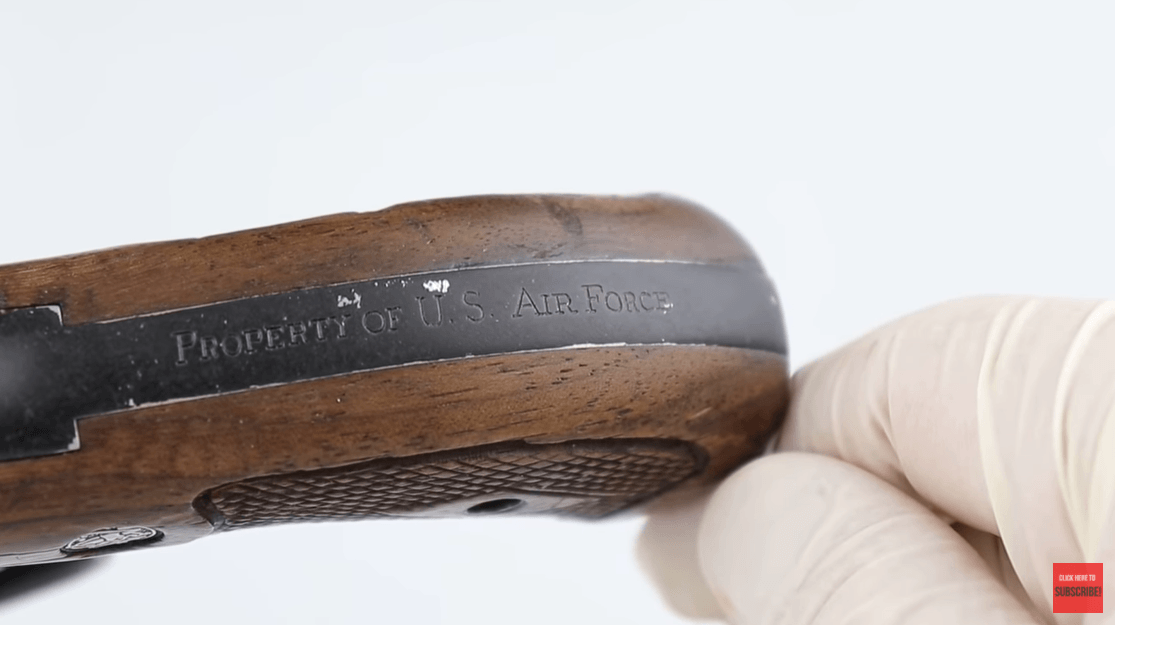
So one of the ways it's easiest to see that this is a property of the US Air Force is if you look at the back strap. Both the Smith and Wesson and the Colt will have that on the back strap.
Look for the markings
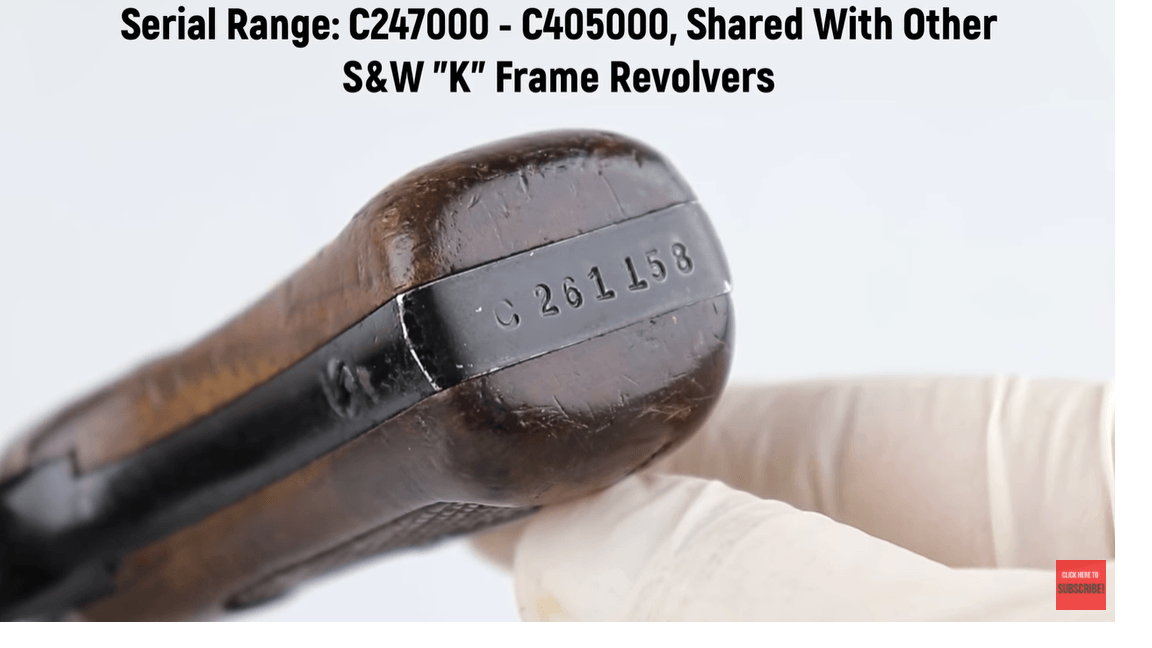
Now, this can be faked, so you do want to make sure you take a look at the serial range. The serial number is found on the bottom, it begins with a C, but you can see right here on the bottom is the serial number. And if you break open the cylinder, you actually see the Air Force property number. If you look at the top of the revolver you do see revolver lightweight and M13. So those are the general markings. There's one other that you can see, a P-proof which is commonly used in the military as the military acceptance proof. So even though it was unsafe, it was accepted by the military. Perfect military logic [Video Clip 04:18 -04:23].
The double action mechanism
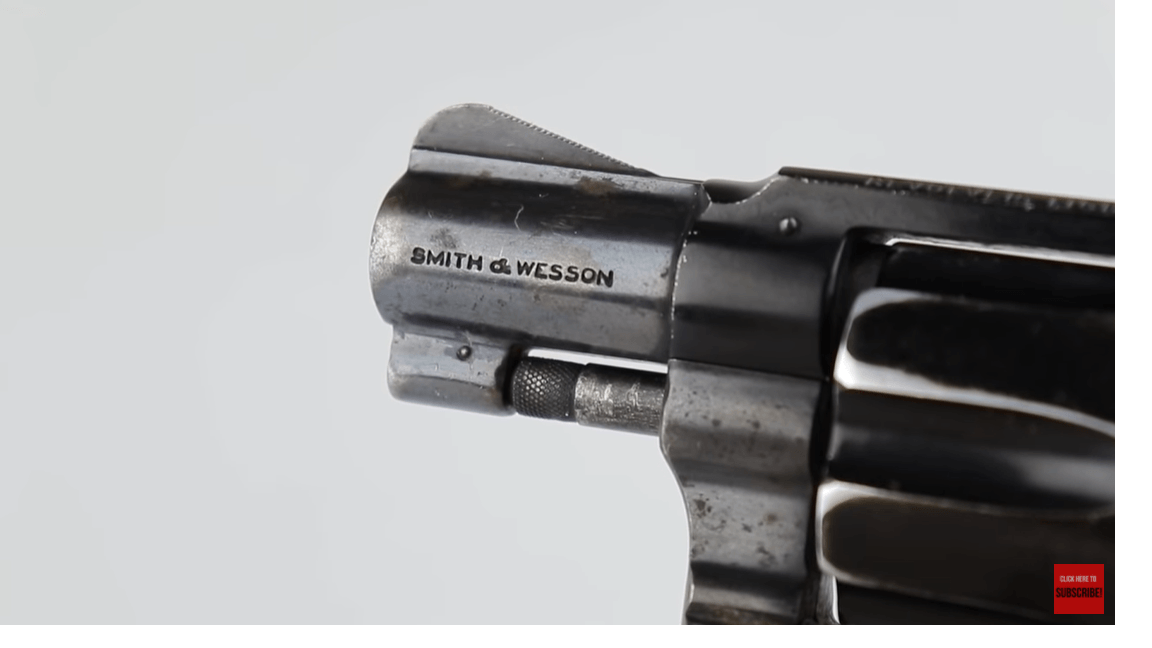
And since I'm not going to shoot it, let me just point out and of course, the commercial variations of this pistol work the same way. It works in double action, both by pulling the trigger and letting the hammer drop or cocking it and letting the hammer drop that way. If I just push the button forward, cylinder opens up pretty easily for loading and unloading the shells. If you look at the barrel just a two-inch barrel. On one side it says Smith and Wesson and on the reverse side, you'll have a .38 special.
Did we make it too light?
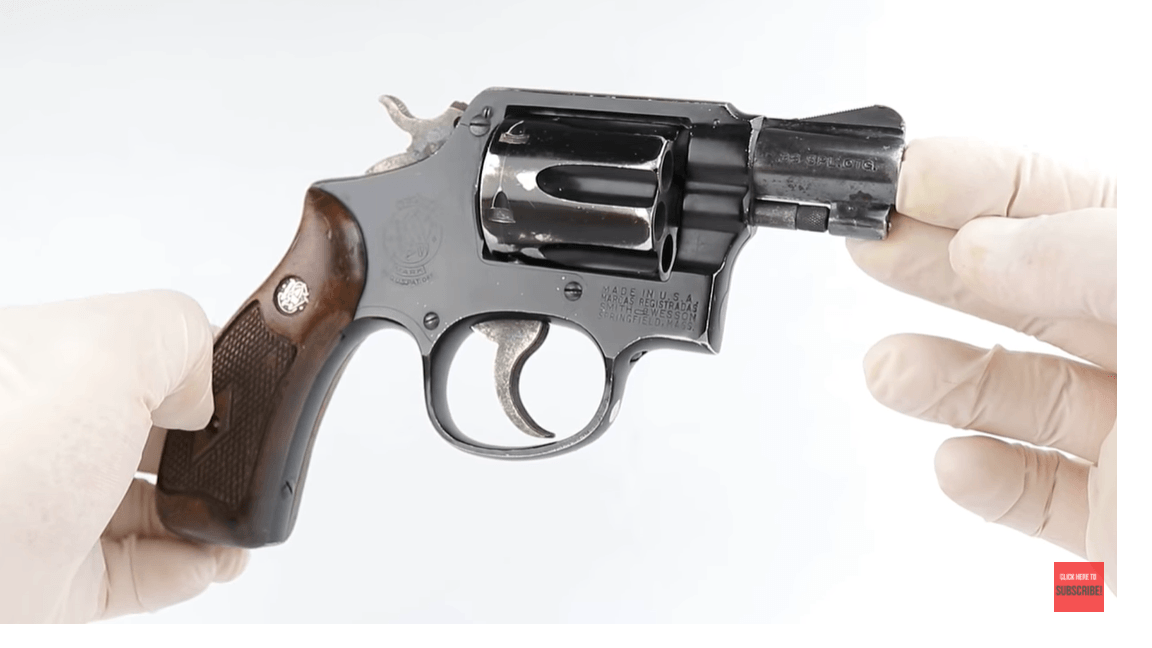
Now, this isn't a new design. Actually Colt and Smith and Wesson made these lightweight aluminum frame guns. What makes this one different is they probably went a bridge too far. They made a lightweight aluminum frame but they also made the cylinder aluminum and that was because of the Air Force specifications. They wanted them as light as possible. That was probably a poor decision and ended up wasting a lot of money because these things failed fairly frequently. In fact, if you ever get one it's highly recommended that you not shoot it. Ian who shoots just about everything said that he would not shoot one. So the because it has the lightweight frame and cylinder they actually made a special load just for this gun. It was a very light load. So it was a .38 special cartridge that they used for this and that did certainly help but it didn't solve the problem.
Weight was a factor!
So eventually after 1957, again we were going through the Korean war, we were beginning to fly nuclear weapons in bombers off the coast of Russia and probably in the Pacific Theater as well. And so bomber crews they had a fairly large number of men and material inside a plane, very heavy, so weight was a factor.
Check out the Colt Cobra

So here is a Colt Cobra which is very similar. This has an aluminum frame and by the way the finish on this aluminum won't take the bluing. So if you look at the cylinder and also the frame, they used an anodized, which by the way airplanes often use this process. They used an anodized black paint which adheres to the aluminum but it wears off very quickly so it doesn't hold up very well. We know that from German guns. The Germans were experimenting with aluminum frame guns when they were making the wartime and pre-war PP's and PPK's. We know that from previous videos.
Since weight was important, let’s compare the two
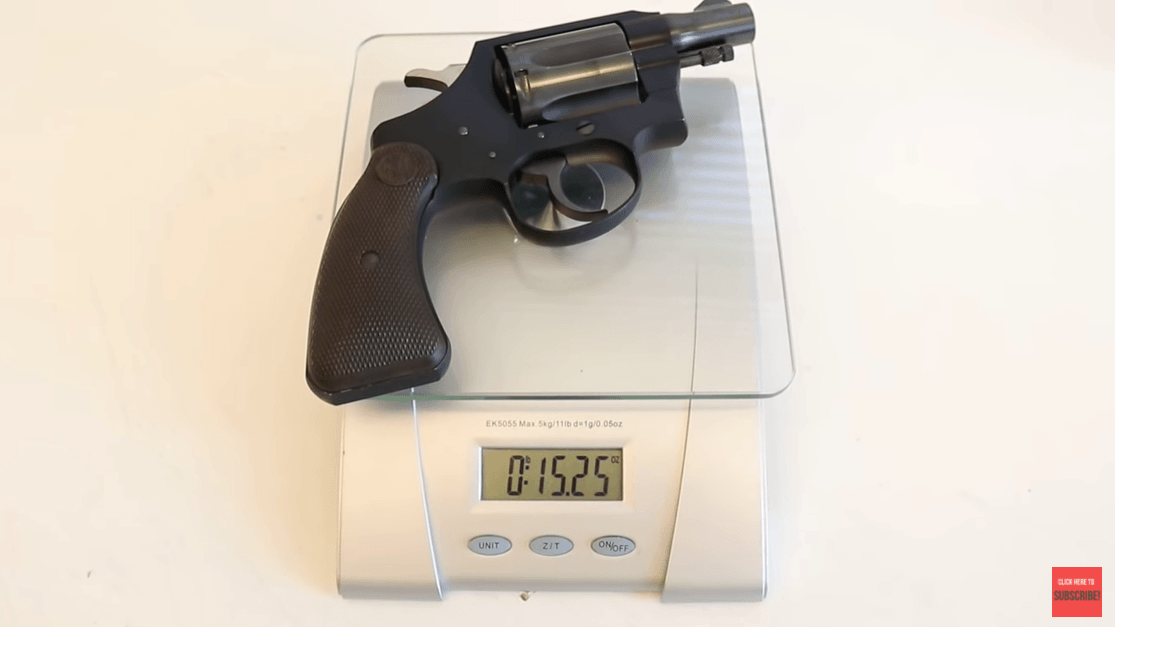
So this Colt Cobra is actually a little bit smaller but I wanted to check out the weight differential because the defining factor that ruined the design was not the frame. The aluminum frame does work but the aluminum cylinder is what caused the problem. So how much weight was actually saved by adding the aluminum cylinder. So if we take this to a scale we can see that the Colt Cobra, again a little bit smaller so it's not that that much of a fair test, is about 15 ounces, right about 15 ounces, a little over. And the M13 survival weapon is about 14.5 ounces. So they didn't say very much. Now, this design is from the 60s, this Colt Cobra is from the 60s.
Was aluminium a good choice?
Let's first take a look at the size. So I'm going to superimpose one over the other. You can clearly see that the frame is a little bit longer, also the barrel is definitely thicker. So this Colt Cobra is smaller than the M13 and yet with the aluminum cylinder which ruined the design, it really doesn't save much weight at all. So when you're thinking about whether a fighter pilot or a bomber pilot the one ounce that we saved actually ruined the design of the gun.
No going back with the military

Now the military and you hear this, I'm not wanting to disparage the military, but once they put in an order they tend to stick with it. They put in orders for these guns, they knew they had problems right away but they went ahead and made 40,000 of them for about four years. At the end of that time, I guess that there was enough of an outcry, probably from the men who carried them. They decided to destroy them all. So 40,000 of them were destroyed.
The survival weapons that survived
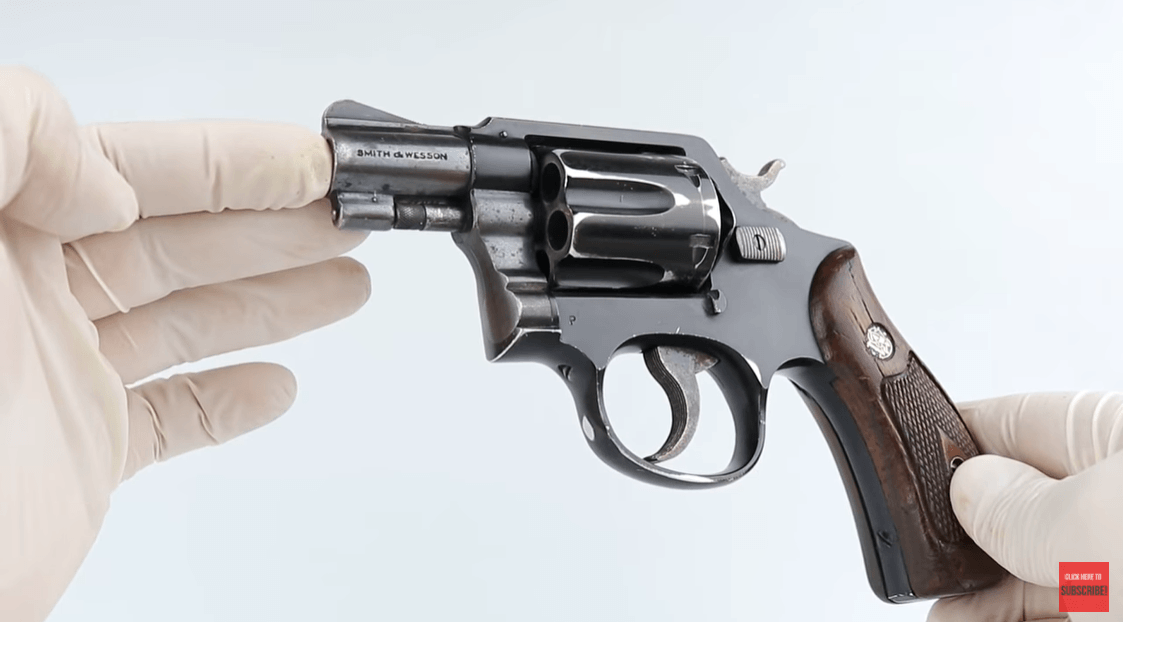
Now the only ones that survived...so this is a survival weapon that survived. I would imagine the only ones that had survived were ones that were issued to crew. They had them in their locker or they had them set aside, maybe it was under the front seat of their car. Wherever these were they escaped being destroyed. So there are very few of them. I can't tell you how many are known but I do know that if you try to find them online they're very hard to find. Again the Colt variation is rarer than the Smith and Wesson but both of them are very hard to find. If you get one obviously you can't shoot it but it's a nice collectable piece.
Quick rundown of survival weapons – Luftwaffe!
So to wrap up this Walk-in Wednesday and because this is a quickie, still I want to give you just a quick overview of survival weapons. We actually talked about the Luftwaffe drilling, we did a whole video. Here's a link to that video https://youtu.be/2zFeqEFmxI0. And you remember we talked about the Luftwaffe drilling. Its purpose, probably it was given out as gifts to Officers in the Luftwaffe, but it did have a utility purpose which was if you were downed, it would serve as a survival weapon in foraging for food. And that's actually the published information.
Upgrade to the US Air Force Survival Weapon
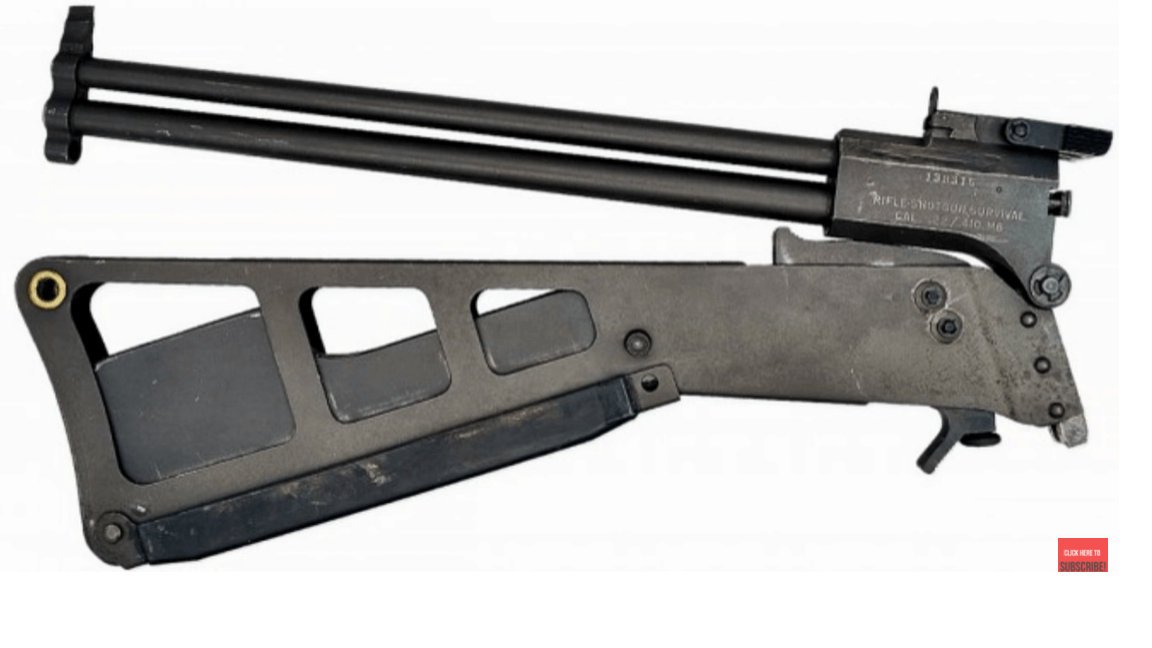
The US Air Force this survival weapon is a little more suspect in terms of it wouldn't really help you foraging for food. These are not that accurate unless you're really close up, at which point you could use a rock to kill a squirrel. But I don't imagine it was really designed for foraging food, in fact, the M4 right after World War II and right about the time that this was designed, the M4 was carried by crews, bomber cruise as a foraging for food weapon. You can see a picture, it's just a really lightweight, very crude weapon, bolt action .22. And then later they came out with the M6, which I actually have seen at auctions and things but this is just a lightweight .22. I believe it's semi-automatic, .22 hornet. You could see the utility of having something where again, you're either behind enemy lines or in the middle of a desert, it would allow you to forage for food. So that part of it makes sense.
We’ll just carry a regular weapon
Now I'm told today that the Air Force would carry just a regular service weapon, whether it's a Beretta or another service weapon, they would have that as their sidearm. But they also do carry a modified version of the M4 Carbine which they can break apart and carry in the cockpit with them. If they're downed, it gives them a little more firepower to defend themselves but also foraging for food.
Thanks for watching
Hey, thanks for watching. A little bit offbeat in that, I don't think I've ever shown you a Smith and Wesson before. So thanks for watching. Make sure you like and subscribe to our channel and stay tuned because I'm coming at you with a couple more quickies.
